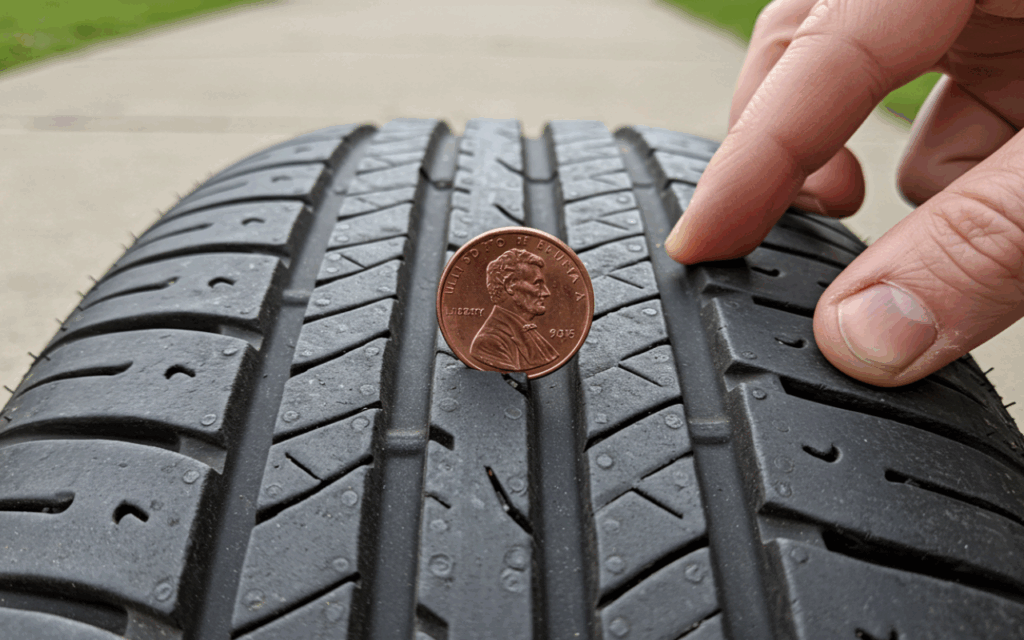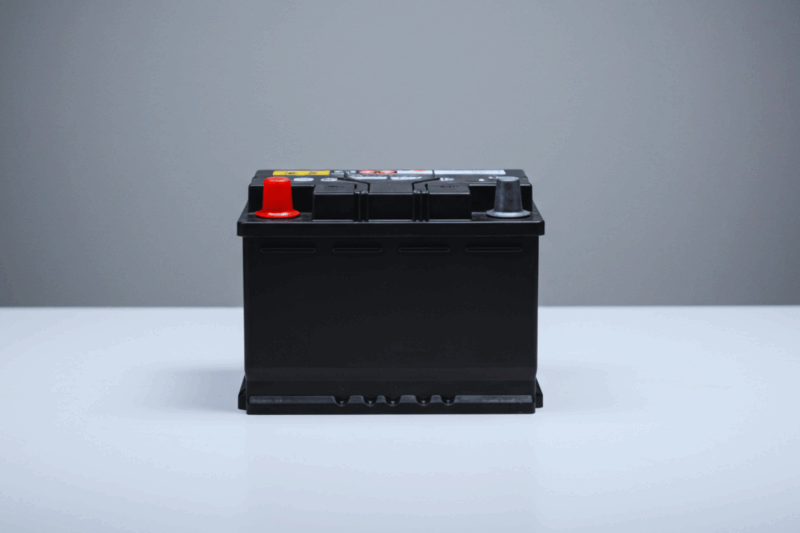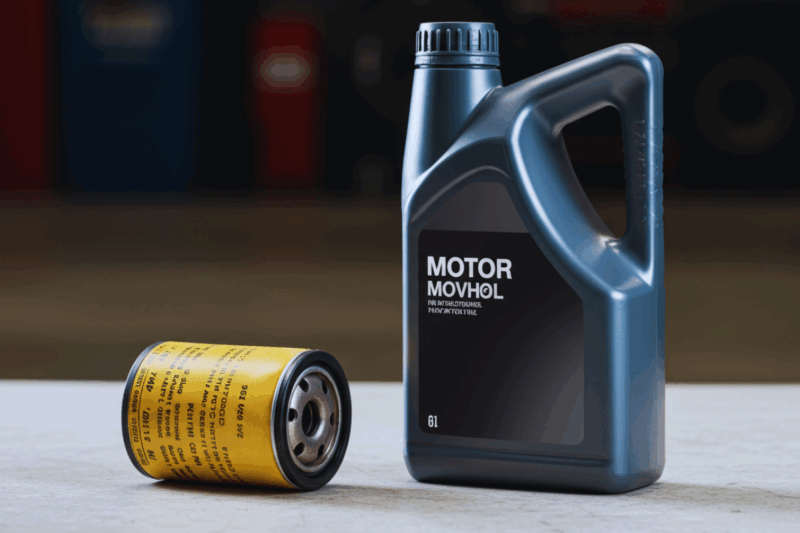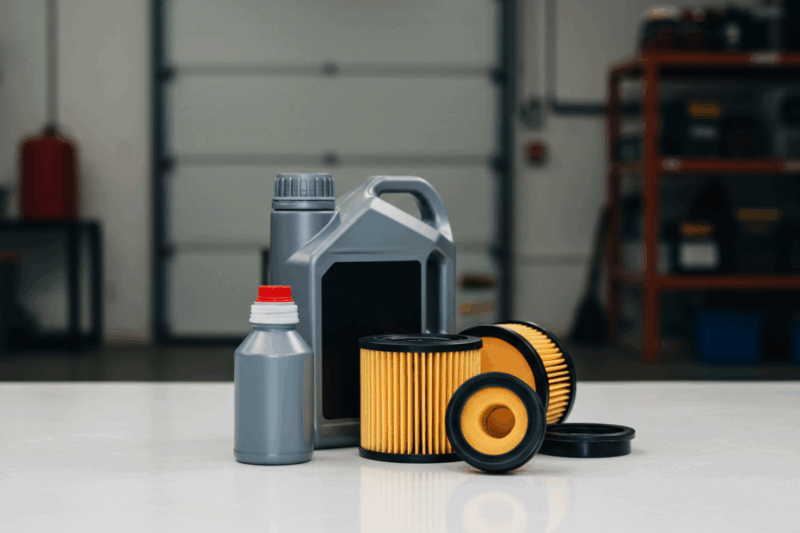Your car’s tires play a vital role in ensuring your safety on the road. One of the most important aspects of tire maintenance is monitoring the tread depth. Worn-out tires can compromise your vehicle’s grip, especially in wet or slippery conditions, making it crucial to check your tread depth regularly. The good news? You don’t need any fancy tools or equipment to do this! In this guide, we’ll walk you through some simple, tool-free methods to check your tire tread depth at home.

Why Is Tire Tread Depth Important?
The tread on your tires helps maintain traction and channel water, snow, or debris away from the tire’s surface. Over time, this tread wears down, reducing your tires’ ability to grip the road. Driving on tires with insufficient tread depth can lead to:
- Increased stopping distances
- Higher risk of hydroplaning
- Reduced control in poor weather conditions
In many places, the legal minimum tread depth is 2/32 of an inch (1.6 mm). However, for optimal safety, it’s often recommended to replace your tires when the tread reaches 4/32 of an inch (3.2 mm) or less.
How to Check Tread Depth Without Tools
→ Here are three easy and effective ways to check your tire tread depth without needing any special tools:
1. The Penny Test
The penny test is a classic and reliable way to measure tread depth. All you need is a standard U.S. penny. Here’s how to do it:
- Take a penny and hold it so that Lincoln’s head is facing downward.
- Insert the penny into the tire tread groove.
- Look closely at how much of Lincoln’s head is visible:
- If you can see all of Lincoln’s head, your tread depth is less than 2/32 of an inch, and it’s time to replace your tires immediately.
- If part of Lincoln’s head is covered by the tread, your tires still have enough depth for safe driving.
→ This quick test can give you a general idea of whether your tires are safe or need replacing.
2. The Quarter Test
If you want a slightly more conservative approach, you can use a quarter instead of a penny. The quarter test works similarly but gives you an earlier warning that your tread is wearing down. Here’s how:
- Hold a quarter with Washington’s head facing downward.
- Insert the quarter into the tire tread groove.
- Observe how much of Washington’s head is visible:
- If you can see all of Washington’s head, your tread depth is less than 4/32 of an inch, and it’s time to start considering new tires.
→ This method is particularly useful if you want to replace your tires before they reach the legal minimum.
3. Check for Built-In Tread Wear Indicators
Most modern tires come equipped with built-in tread wear indicators, which are small raised bars located inside the grooves of the tire tread. These bars are designed to help you visually assess when your tires are nearing the end of their lifespan.
Here’s how to check:
- Look closely at your tire tread and locate the small raised bars running across the grooves.
- If the tread is flush with these bars, it means your tires have worn down to 2/32 of an inch and need replacing immediately.
→ This method is especially convenient because it doesn’t require any additional items like coins.
Additional Tips for Checking Tire Health
While checking your tread depth is important, it’s not the only factor to consider when assessing your tires’ condition. Here are some additional tips:
- Inspect for uneven wear: Uneven wear patterns can indicate alignment issues or improper tire inflation. Addressing these problems early can help extend the life of your tires.
- Look for cracks or bulges: Visible damage like cracks, bulges, or cuts in the tire sidewall can compromise safety and may require immediate attention.
- Check tire pressure regularly: Proper inflation not only improves fuel efficiency but also helps prevent uneven wear and prolongs tire life.
When Should You Replace Your Tires?
→ Even with proper maintenance, all tires eventually wear out and need replacing. Here are some signs that it might be time for new tires:
- Tread depth is below 2/32 of an inch: As mentioned earlier, this is the minimum legal limit in most areas.
- Tires are over six years old: Even if your tread looks fine, rubber deteriorates over time, so it’s generally recommended to replace tires after six to ten years, depending on manufacturer guidelines.
- You notice performance issues: If your car feels less stable or takes longer to stop, it could be a sign that your tires are no longer performing as they should.
Stay Safe on the Road
Checking your tire tread depth at home is a quick and easy way to ensure your vehicle remains safe and roadworthy. By using simple methods like the penny test or inspecting built-in tread wear indicators, you can stay on top of tire maintenance without needing any special tools or expertise.
Remember, well-maintained tires not only improve your car’s performance but also provide peace of mind every time you hit the road. So go ahead, grab that penny or quarter and give your tires a quick check today.



